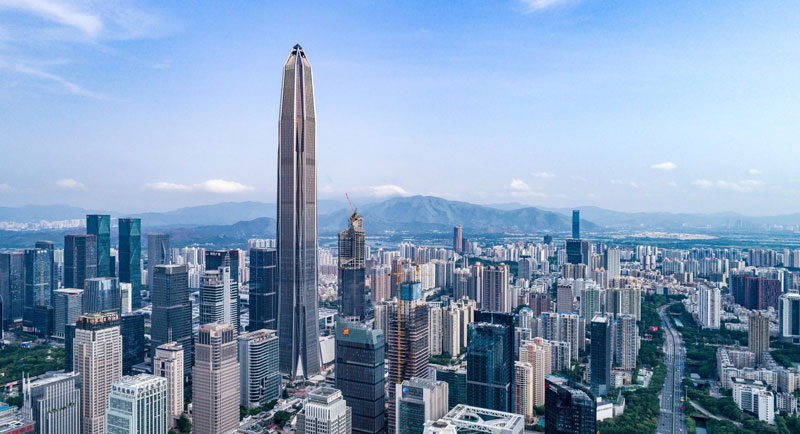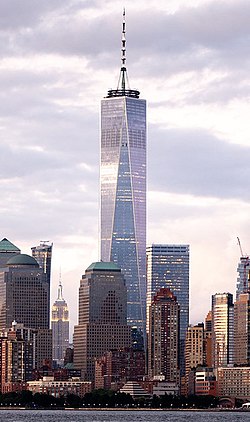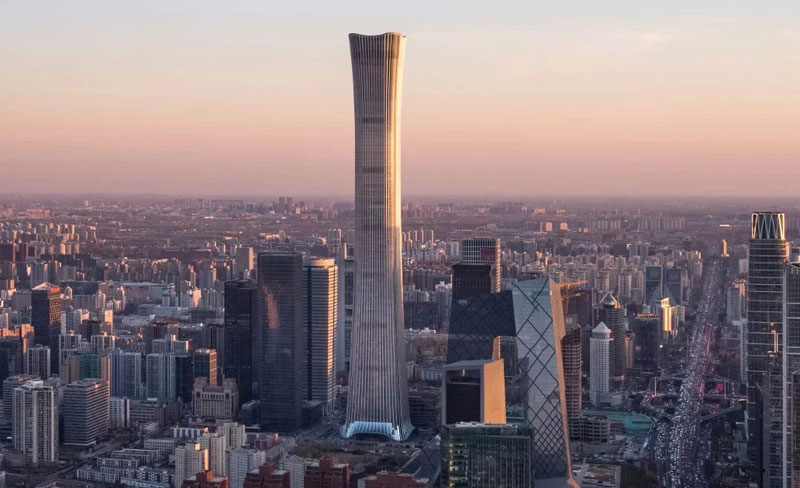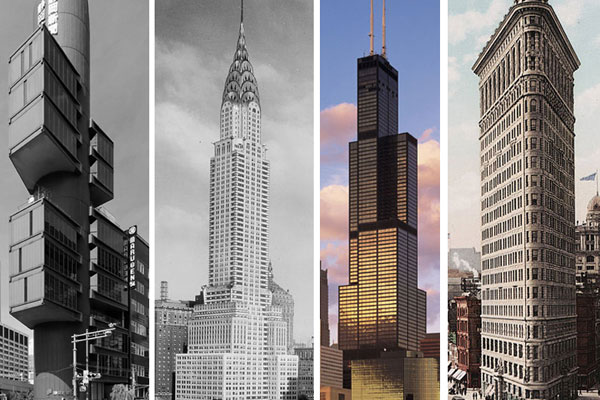The 20th century was surely the century for high-rise buildings. Humans have always been fascinated by height. Whether it be Icarus or the Wright Brothers, we have always sought to escape the bonds of gravity. Skyscrapers let us fly if only briefly. And then there are the less lofty reasons for going taller — such as maximizing land value and ever-improving technology and engineering capabilities. Currently, cities are undergoing increasing inundation by indigenes from the rural areas in search of jobs, education and better facilities. This puts immense pressure on the demand for housing, leading to spiraling property costs. Educational institutes, health centers, industries and commercial activities all attract people from surrounding habitations and into the cities. This leads to expansion in all aspects of the city; the bad part is that there is increased congestion, pollution, competition as well as deforestation as the city tries to expand horizontally first.
We have analysed the structure, architecture and design of top ten high rise buildings across the globe.
Burj Khalifa
The Burj Khalifa is a skyscraper in Dubai, United Arab Emirates. With a total height of 829.8 m (2,722 ft) and a roof height (excluding antenna, but including a 244 m spire of 828 m (2,717 ft), the Burj Khalifa has been the tallest structure and building in the world since its topping out in 2009.
Construction of the Burj Khalifa began in 2004, with the exterior completed five years later in 2009. The primary structure is reinforced concrete. The building was opened in 2010 as part of a new development called Downtown Dubai. It is designed to be the centrepiece of large-scale, mixed-use development. The decision to construct the building is based on the government’s decision to diversify from an oil-based economy, and for Dubai to gain international recognition. The building was originally named Burj Dubai but was renamed in honour of the ruler of Abu Dhabi and president of the United Arab Emirates, Khalifa bin Zayed Al Nahyan; Abu Dhabi and the UAE government lent Dubai money to pay its debts. The building broke numerous height records, including its designation as the tallest building in the world.

Burj Khalifa was designed by Adrian Smith, of Skidmore, Owings & Merrill, whose firm designed the Willis Tower and One World Trade Center. Hyder Consulting was chosen to be the supervising engineer with NORR Group Consultants International Limited chosen to supervise the architecture of the project. The design is derived from the Islamic architecture of the region, such as in the Great Mosque of Samarra. The Y-shaped tripartite floor geometry is designed to optimize residential and hotel space. A buttressed central core and wings are used to support the height of the building. Although this design was derived from Tower Palace III, the Burj Khalifa’s central core houses all vertical transportation with the exception of egress stairs within each of the wings. The structure also features a cladding system which is designed to withstand Dubai’s hot summer temperatures. It contains a total of 57 elevators and 8 escalators.
Shanghai Tower
The Shanghai Tower is a 632-metre (2,073 ft), 128-story megatall skyscraper in Lujiazui, Pudong, Shanghai. It shares the record (along with the Ping An Finance Center) of having the world’s highest observation deck within a building or structure at 562 m, and the world’s second-fastest elevators at a top speed of 20.5 metres per second (74 km/h; 46 mph).It is the world’s second-tallest building by height to architectural top. However, the title of the world’s fastest elevator now belongs to the Guangzhou CTF Finance Centre, with a top speed of 21 metres per second (76 km/h; 47 mph) achieved in 2017. Designed by international design firm Gensler and owned by the Shanghai city government, it is the tallest of the world’s first triple-adjacent supertall buildings in Pudong, the other two being the Jin Mao Tower and the Shanghai World Financial Centre. Its tiered construction, designed for high energy efficiency, provides nine separate zones divided between office, retail and leisure use.
The Shanghai Tower was designed by the American architectural firm Gensler, with Shanghainese architect Jun Xia leading the design team. The tower takes the form of nine cylindrical buildings stacked atop each other, totalling 128 floors, all enclosed by the inner layer of the glass facade. Between that and the outer layer, which twists as it rises, nine indoor zones provide public space for visitors. Each of these nine areas has its own atrium, featuring gardens, cafés, restaurants and retail space, and providing panoramic views of the city.

Both layers of the façade are transparent, and retail and event spaces are provided at the tower’s base.The transparent façade is a unique design feature, because most buildings have only a single façade using highly reflective glass to reduce heat absorption, but the Shanghai Tower’s double layer of glass eliminates the need for either layer to be opaque. The tower is able to accommodate as many as 16,000 people on a daily basis.
The Shanghai Tower joins the Jin Mao Tower and SWFC to form the world’s first adjacent grouping of three supertall buildings. Its 258-room hotel, located between the 84th and 110th floors, is to be operated by Jin Jiang International Hotels as the Shanghai Tower J-Hotel, and at the time of its completion it will be the highest hotel in the world.The tower will also incorporate a museum.The tower’s sub-levels provide parking spaces for 1,800 vehicles
Abraj Al-Bait
The Abraj Al-Bait is a government-owned complex of seven skyscraper hotels in Mecca, Saudi Arabia. These towers are a part of the King Abdulaziz Endowment Project that aims to modernize the city in catering to its pilgrims. The central hotel tower, the Makkah Royal Clock Tower, has the world’s largest clock face and is the third-tallest building and fifth-tallest freestanding structure in the world. The clock tower contains the Clock Tower Museum that occupies the top four floors of the tower.
The building complex is metres away from the world’s largest mosque and Islam’s most sacred site, the Great Mosque of Mecca. The developer and contractor of the complex are the Saudi Binladin Group, the Kingdom’s largest construction company. It is the world’s most expensive building with the total cost of construction totalling US$15 billion. The complex was built after the demolition of the Ajyad Fortress, the 18th-century Ottoman citadel on top of a hill overlooking the Grand Mosque. The destruction of the historically significant site in 2002 by the Saudi government sparked an international outcry and a strong response from Turkey.

The project uses clock faces for each side of the main hotel tower. The highest residential floor stands at 370 m (1,210 ft), just below the media displays under the clock faces. At 43 m × 43 m (141 ft × 141 ft), these are the largest in the world. The roof of the clocks is 450 m (1,480 ft) above the ground, making them the world’s most elevated architectural clocks. A 151-metre-tall (495 ft) spire has been added on top of the clock giving it a total height of 601 m (1,972 ft). Behind the clock faces there is an astronomy exhibition. In the spire base and the glass-covered floors (The Jewel) there is a scientific center which is used to sight the moon in the beginnings of the Islamic months, and to operate an atomic clock which controls the tower clocks
Ping An International Finance Center
The Ping An International Finance Center (also known as the Ping An IFC) is a 115-story, 599 m (1,965 ft) supertall skyscraper in Shenzhen, Guangdong. The building was commissioned by Ping An Insurance and designed by the American architectural firm Kohn Pedersen Fox Associates. It was completed in 2017, becoming the tallest building in Shenzhen, the 2nd tallest building in China and the 4th tallest building in the world. It also broke the record of having the highest observation deck in a building at 562.2 m (1,844 ft).

The building contains office, hotel and retail spaces, a conference center, and a high-end shopping mall. Floor 116 features an observation deck named Free Sky. As its name suggests, it is also the headquarters of Ping An Insurance. The design of the building is meant to be unique and elegant, and to represent the history and achievements of the main tenant. A stainless-steel facade that weighs approximately 1,700 metric tons provides a modern design to the building.The building has a total gross floor area of 378,600 square meters. The 115-story tower has a width-to-height aspect ratio of 1:10 and also has an 11-story podium. Including the podium, the building has 495,520 square meters of floor space. A five-level basement adds another 90,000 square meters of area. The 620,000 metric ton tower has eight main columns which form the superstructure. The column dimensions range from approximately 6 by 3.2 m at the lowest level to 2.9 by 1.4 m at the top of the tower.
Lotte World Tower
Lotte World Tower is a 123-floor, 555.7-metre (1,823 ft) supertall skyscraper located in Seoul, South Korea. It opened to the public on April 11, 2017 and is currently the tallest building in South Korea, and is the 6th tallest building in the world.
In 1989, the first design was made and there was a plan. Design changed again in 1994, 1995 and 1997. The design that came out of the second Lotte World in 2002 was similar to that of France, which literally copied the Eiffel Tower. Following the revision of the bird’s eye view from 2004 to 2006, the bird’s eye view was changed seven times in 2008 and the design was changed in 2009 and the Lotte World Tower began to break ground. The Shard of England is said to be similar in design. The Shard, the design of renowned Italian architect Renzo Piano, was launched in 2008 and completed in 2012 and opened in 2013. Its interior and elevator atmosphere are similar. In addition, space externally on the roof tower is similar.

On March 17, 2016, prior to the final phase of external construction, the Diagrid lantern-shaped roof structure was completed. The roof structure was constructed with steel counterparts that are each 12 meters and weigh 20 tons. The counterparts were made up of bent metal panels that are 6 cm thick, and the structure itself is 120 meters high, and it covers floors 107–123. Approximately 3,000 tons of steel parts, a high-precision 64t tower crane, high-precision GPS alignment systems and highly skilled welding technicians were used in the construction of the roof itself. The roof structure is engineered to withstand its weight without reinforcing pillars, and endure earthquakes up to a magnitude of 9 under the Richter magnitude scale and winds up to 80 m/s.
One World Trade Center
One World Trade Center (also known as One WTC or Freedom Tower is the main building of the rebuilt World Trade Center complex in Lower Manhattan, New York City. One WTC is the tallest building in the United States, the tallest building in the Western Hemisphere, and the seventh-tallest in the world. The supertall structure has the same name as the North Tower of the original World Trade Center, which was destroyed in the terrorist attacks of September 11, 2001. The new skyscraper stands on the northwest corner of the 16-acre (6.5 ha) World Trade Center site, on the site of the original 6 World Trade Center. The building is bounded by West Street to the west, Vesey Street to the north, Fulton Street to the south, and Washington Street to the east.
The building’s architect is David Childs, whose firm Skidmore, Owings & Merrill (SOM) also designed the Burj Khalifa and the Willis Tower. The construction of below-ground utility relocations, footings, and foundations for the new building began on April 27, 2006. One World Trade Center became the tallest structure in New York City on April 30, 2012, when it surpassed the height of the Empire State Building. The tower’s steel structure was topped out on August 30, 2012. On May 10, 2013, the final component of the skyscraper’s spire was installed, making the building, including its spire, reach a total height of 1,776 feet (541 m). Its height in feet is a deliberate reference to the year when the United States Declaration of Independence was signed. The building opened on November 3, 2014; the One World Observatory opened on May 29, 2015.

The construction of the World Trade Center, of which the Twin Towers (One and Two World Trade Center) were the centerpieces, was conceived as an urban renewal project and spearheaded by David Rockefeller. The project was intended to help revitalize Lower Manhattan. The project was planned by the Port Authority of New York and New Jersey, which hired architect Minoru Yamasaki. He came up with the idea of building twin towers. After extensive negotiations, the New Jersey and New York State governments, which supervise the Port Authority, consented to the construction of the World Trade Center at the Radio Row site, located in the lower-west area of Manhattan.[19] To satisfy the New Jersey government, the Port Authority agreed to buy the bankrupt Hudson & Manhattan Railroad (renamed to Port Authority Trans-Hudson), which transported commuters from New Jersey to Lower Manhattan.
Guangzhou Chow Tai Fook Finance Centre
The Guangzhou Chow Tai Fook Finance Centre (also called East Tower) is a 1,739-foot (530 m) tall mixed-use skyscraper in Guangzhou, Guangdong, which was completed in October 2016. It is the tallest completed building in Guangzhou, the third-tallest in China, and the seventh-tallest in the world. The Guangzhou CTF Finance Centre has a total of 111 above ground and five below ground floors and houses a shopping mall, offices, apartments, and a hotel. The skyscraper has a gross floor area of 5,464,633 square feet (507,681.0 m2), of which a little over 20% is not part of the skyscraper itself, but of the podium connected to it.

The Guangzhou CTF Finance Centre is situated on a 290,000-square-foot (27,000 m2) lot along Zhujiang East Road in Zhujiang New Town, Guangzhou’s central business district.[5] In that neighborhood, the skyscraper is located east of the central axis with an underground mall and connections to public transportation underneath it. The Guangzhou CTF Centre is part of the Guangzhou Twin Towers. The other tower of the pair, the 1,439-foot (439 m) tall Guangzhou International Finance Center, is located on the other side of the axis and is also known under the name “West Tower”. The Guangzhou CTF Centre is therefore known as the “East Tower” as well. Both towers have a similar height, size, and function, and are situated close to the 1,982-foot (604 m) tall Canton Tower.
Tianjin CTF Finance Center
Tianjin CTF Finance Center is a supertall skyscraper in Tianjin, China. Construction started in 2013 and was completed in 2019. The tower is the second tallest building in Tianjin after Goldin Finance 117, eighth tallest completed building in the world, and the tallest building in the world with less than 100 floors. It is located in the outer district of the Tianjin Economic-Technological Development Area.
The building commonly designed as the softly curving glass skin integrates eight sloping mega columns that follow a lyrical line connecting the centers and corners of all four elevations. These curving mega columns increase the structure’s response to seismic concerns and are integral to both the gravity and lateral systems. They are effective in increasing the stiffness of the building’s perimeter frame, consequently attracting a larger portion of the seismic forces in compliance with the Chinese code requirements. The façade reinforces the curvature of the tower form and creates a shimmering texture over the building’s surface. The crystalline-like curtain wall stretches from the suspended glass canopies at each of the lobbies to the dematerialized, megacolumn-looped crown and presents a bold expression of a comprehensive, integrated design on the Tianjin skyline.

By stacking reducing floor plates, the tower tapers dramatically to minimize the surface area exposed to wind, sun, and moisture. The gently-undulating curves of the façade subtly denote the integration of the three distinct programs within a singular smooth object. Square in plan with rounded corners, the floor plate geometry enables unique interior fit-outs and customization options for occupants. Research by the architect has shown that lateral forces due to vortex shedding can be controlled by tapering the vertical profile of the tower and softening any sharp corners in plan. The building’s aerodynamic shape greatly reduces this vortex shedding by “confusing the wind” and disrupting the opportunity for any resonating wind forces and loads on the structure.
CITIC Tower
CITIC Tower is a supertall skyscraper in the Central Business District of Beijing. It is popularly known as China Zun. The 109-storey, 528 m (1,732 ft) building is the tallest in the city, surpassing that of the China World Trade Center Tower III by 190 metres. On August 18, 2016, CITIC Tower surpassed China World Trade Center Tower III in height, becoming Beijing’s tallest building. The tower structurally topped out on July 9, 2017, fully topped out on August 18, 2017, and was completed in late 2018 making CITIC Tower the tallest completed building of 2018
China Zun Tower is a mixed-use building, featuring 60 floors of office space, 20 floors of luxury apartments and 20 floors of hotel with 300 rooms,there will be a rooftop garden on the top floor at 524m high. The tower is likely to remain the tallest building in Beijing for the foreseeable future, as in 2018 authorities capped new projects in the central business district to a height of no more than 180 meters in a bid to reduce congestion.

CITIC Tower’s design draws inspiration from the “zun”, a ritual vessel originating in Bronze Age China. In profile, the tower abstracts and refines the zun’s vase-like form, balancing composition and articulation with structural requirements and leasing depth needs. In plan, the building is square with rounded corners; its width transforms vertically from its 78-meter-wide base to its 54-meter-wide “waist” to its 69-meter-wide top. Broader at its base than its crown, the tower combines its iconography with infrastructure that supports the building’s integrity in China’s greatest seismic zone.
These sweeping proportions meet the ground with particular finesse. The lobby’s distinct upward curve mirrors the tower’s fluted, outward drape in the opposite direction, providing a dramatic backdrop to the pedestrian experience. The interior canopy features bespoke aluminum ribbing that follows its curvature and echoes the tower’s elegant façade expression.
CITIC Tower anchors the northern end of the city’s CBD, forming an iconic backdrop to the park and a prominent new destination for visitors. The tower also connects to a vast underground transportation network, linking together a pedestrian passageway system, a B2-level roadway, and four subway lines across three stations.
The Taipei
The Taipei 101formerly known as the Taipei World Financial Center, is a supertall skyscraper designed by C.Y. Lee and C.P. Wang in Xinyi, Taipei, Taiwan. This building was officially classified as the world’s tallest from its opening in 2004 until the 2010 completion of the Burj Khalifa in Dubai, United Arab Emirates. Its elevators, capable of traveling 60.6 km/h (37.7 mph) and used to transport passengers from the 5th to 89th floor in 37 seconds, set new records upon completion. In 2011 Taipei 101 received a Platinum rating under the LEED certification system to become the tallest and largest green building in the world. The structure regularly appears as an icon of Taipei in international media, and the Taipei 101 fireworks displays [zh] are a regular feature of New Year’s Eve broadcasts.
Taipei 101’s postmodernist architectural style evokes traditional Asian aesthetics in a modern structure employing industrial materials. Its design incorporates a number of features that enable the structure to withstand the Pacific Rim’s earthquakes and the region’s tropical storms. The tower houses offices and restaurants as well as both indoor and outdoor observatories. The tower is adjoined by a multilevel shopping mall that has the world’s largest ruyi symbol as an exterior feature. Taipei 101 is owned by Taipei Financial Center Corporation. The skyscraper opened on 31 December 2004 to celebrate New Year’s Eve.
The Taipei 101 is designed to withstand typhoon winds and earthquake tremors that are common in the area in the east of Taiwan. Evergreen Consulting Engineering, the structural engineer, designed Taipei 101 to withstand gale winds of 60 meters per second (197 ft/s), (216 km/h or 134 mph), as well as the strongest earthquakes in a 2,500-year cycle.

Taipei 101 was designed to be flexible as well as structurally resistant, because while flexibility prevents structural damage, resistance ensures comfort both for the occupants and for the protection of the glass, curtain walls, and other features. Most designs achieve the necessary strength by enlarging critical structural elements such as bracing. Because of the height of Taipei 101, combined with the surrounding area’s geology-the building is located just 660 ft (200 m) away from a major fault line-Taipei 101 used high-performance steel construction and 36 columns, including eight “mega-columns” packed with 10,000 psi (69 MPa) concrete. Outrigger trusses, located at eight-floor intervals, connect the columns in the building’s core to those on the exterior.
These features, combined with the solidity of its foundation, made Taipei 101 one of the most stable buildings ever constructed.The foundation is reinforced by 380 piles driven 80 m (262 ft) into the ground, extending as far as 30 m (98 ft) into the bedrock. Each pile is 1.5 m (5 ft) in diameter and can bear a load of 1,000–1,320 metric tons (1,100–1,460 short tons). During construction, on 31 March 2002, a 6.8-magnitude earthquake rocked Taipei; two construction cranes from the 56th floor, the highest floor at the time, toppled. Five people died in the accident, but an inspection showed no structural damage to the building, and construction soon resumed
Taipei 101’s characteristic blue-green glass curtain walls are double paned and glazed, offer heat and UV protection sufficient to block external heat by 50 percent, and can sustain impacts of 7 metric tons (8 short tons). The facade system of glass and aluminum panels installed into an inclined movement-resisting lattice contributes to overall lateral rigidity by tying back to the mega-columns with one-story high trusses at every eighth floor. This facade system is therefore able to withstand up to 95 mm (4 in) of seismic lateral displacements without damage. The facade system is also known as a Damper.
Image Source: designboom.com, thetowerinfo.com, nwcl.com.hk, kpf.com, britannica.com

